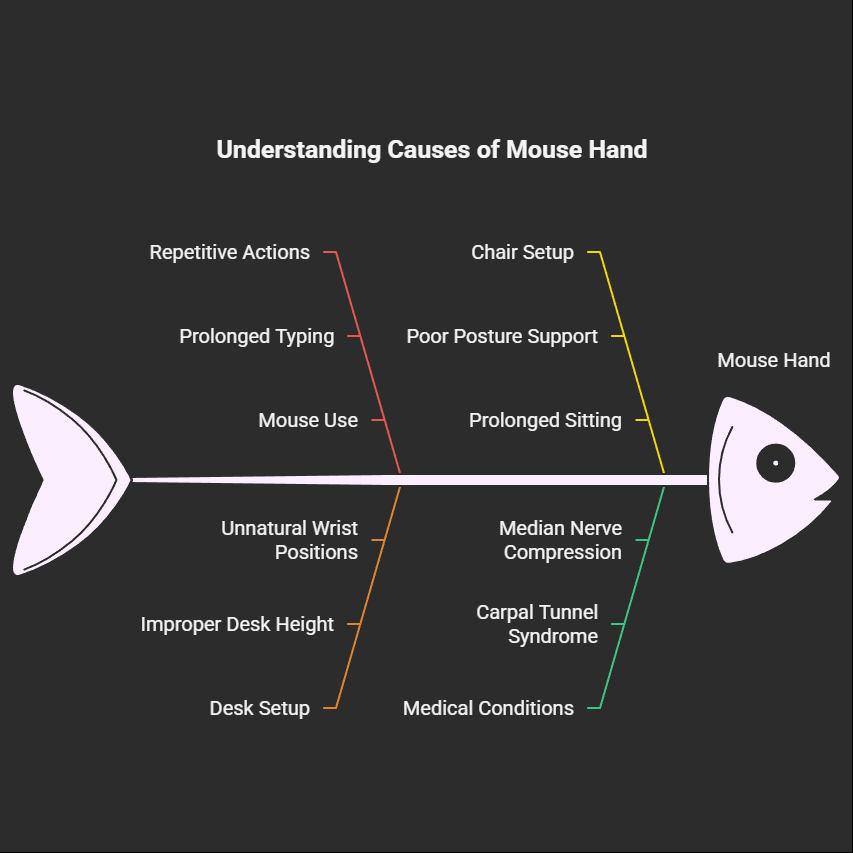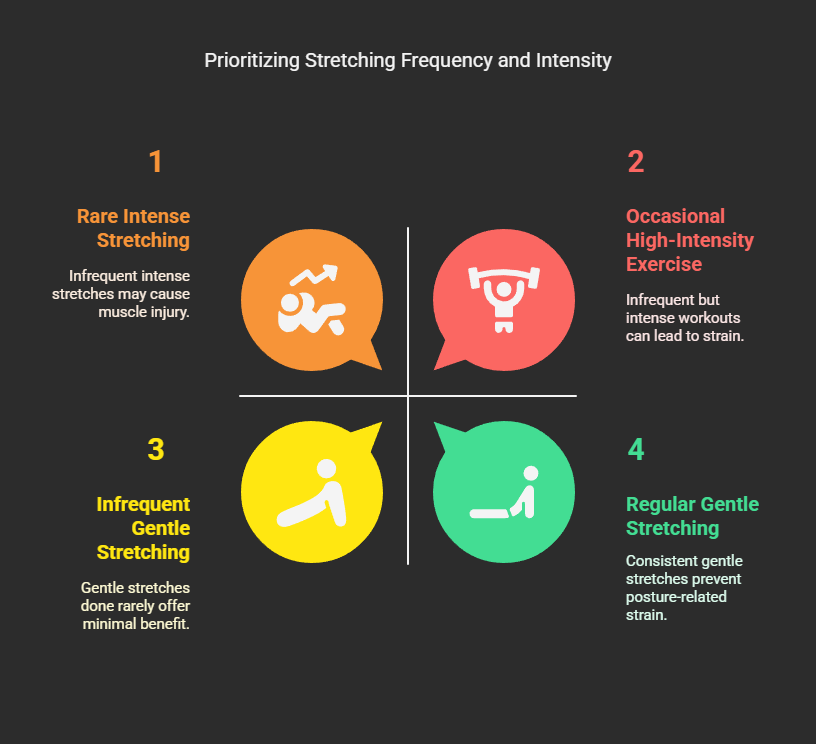Hello everyone, I am your Massage Therapist. In my many years of clinical practice, I've noticed that an increasing number of office workers, who spend long hours on computers, are significantly affected by wrist discomfort and even conditions colloquially known as 'mouse hand'. That progression – from an initial dull ache and occasional numbness to eventually impacting work productivity and sleep quality – is an experience I believe many can relate to.Today, drawing on the 'Happy Healthy Life' philosophy, I want to discuss with you from a professional standpoint how, through simple daily maintenance, we can proactively care for our hands, keep our wrists flexible and healthy, and genuinely achieve a sustainable balance between our work and our well-being.
A 'Happy Healthy Life' is not just about pursuing a body free from illness and pain; it's more significantly a life attitude focused on proactive prevention and achieving mind-body balance. This philosophy reminds us that our bodies communicate through subtle signals – for instance, initial wrist discomfort is a clear warning sign. If we choose to ignore such signals, these minor issues can, over time, develop into the more problematic Carpal Tunnel Syndrome, often referred to colloquially as 'mouse hand'.As a Massage Therapist, I frequently see clients whose repetitive hand movements have led to tight forearm muscles and increased pressure on the wrist. Therefore, incorporating the preventative principles of a 'Happy Healthy Life' into your daily office routine, and learning to listen and respond to your body's needs, is of utmost importance.
To effectively prevent 'mouse hand' (a common term for wrist strain from computer use), we first need to understand its causes. It is medically known as Carpal Tunnel Syndrome and is primarily caused by compression of the median nerve at the wrist. The carpal tunnel is a narrow passage within the wrist, formed by carpal (wrist) bones and ligaments, through which the median nerve and several tendons pass.Repetitive actions, such as prolonged typing or using a mouse, can easily lead to inflammation and swelling of these tendons, which then compress the median nerve. An improper desk and chair setup, which forces the wrist into unnatural bent or extended positions for long periods, can further aggravate the condition. Over time, these seemingly minor factors can accumulate and trigger bothersome symptoms such as numbness, tingling, or even reduced grip strength.

When discussing a 'Happy Healthy Life' and proper wrist care, identifying early warning signs is crucial. Initially, you might experience intermittent numbness or a 'pins and needles' sensation in your thumb, index, and middle fingers, and perhaps part of your ring finger. These sensations are often more noticeable at night and can even disrupt your sleep. Many people find themselves habitually shaking their hands to try and alleviate this.As the condition progresses, hand strength can diminish, making it difficult to grip objects, and fine motor coordination may also deteriorate. If left unaddressed for a long time, severe cases can lead to muscle wasting (atrophy) at the base of the thumb (the thenar eminence).A simple self-assessment, Phalen's test, can be performed at home: press the backs of your hands together, allowing your wrists to flex fully downwards (as if in prayer, but with the backs of hands touching). Hold this position for 30 to 60 seconds. If this brings on or worsens numbness or tingling in your fingers, it's a sign to be more vigilant.
Practising a 'Happy Healthy Life' starts with small changes in the office. Regular and gentle desk-side 'micro-stretches' are one of the most direct and effective methods for preventing 'mouse hand'. These movements help to maintain the flexibility of the muscles and tendons around your wrists, promote local blood circulation, and effectively relieve tightness built up from prolonged static postures.Incorporating these simple stretches into your work breaks can not only help prevent pain but also enhance your comfort and concentration at work. Next, I will share with you two key stretches specifically designed for the wrists, enabling you to easily put the 'Happy Healthy Life' philosophy into practice.
The first exercise is the 'Wrist Extensor Stretch'. Please extend one arm straight out in front of you, parallel to the floor, with your palm facing downwards. Next, gently flex your wrist downwards, so your fingertips point towards the floor. Using your other hand, gently apply pressure to the back of the flexed hand to slightly deepen the stretch.This movement primarily targets the wrist extensor muscles located on the back of your forearm. These muscles often become tense from activities like typing or using a mouse, where they work to stabilise your hand. This stretch can effectively release their tightness and help restore elasticity.Remember to hold each stretch for 15 to 30 seconds, maintain steady, even breathing, and ensure you don't feel any pain.
The second exercise is the 'Wrist Flexor Stretch'. Again, extend one arm straight out in front of you, parallel to the floor, but this time with your palm facing upwards.Then, gently bend your wrist backwards (extend it), so your fingertips point down towards the floor, or slightly back towards your body, as far as is comfortable. Using your other hand, gently apply pressure to your palm, helping to guide your fingers further into extension, to stretch the wrist flexor muscles located on the palm side of your wrist and forearm.These flexor muscles are crucial for actions like gripping your mouse and typing. Stretching them helps to relieve tension built up from repetitive movements, prevent muscle shortening, and in turn, reduce pressure on the structures within the carpal tunnel.
Understanding that these two types of stretches target different yet equally crucial muscle groups can help us to more proactively incorporate them into our daily routine. It's recommended to perform both sets of stretches every hour you work, or after completing a specific task.Integrating these small 'Happy Healthy Life' actions into your work rhythm, and doing them consistently, is far more beneficial than occasional bouts of high-intensity exercise. Remember, the key to prevention is regularity and gentleness. This allows your body to be cared for almost without you realising, helping you avoid the strain caused by maintaining fixed postures for long periods.

Besides regular stretching, creating an ergonomic, 'wrist-friendly' workspace is also an indispensable part of practising a 'Happy Healthy Life'. From a massage therapist's perspective, the root of much wrist discomfort is often inextricably linked to working in poor posture for extended periods.Firstly, your chair should be adjusted so that your feet can rest flat on the floor with your knees at roughly a 90-degree angle, and ensure you have good lumbar support. Your desk height should then complement your chair height, allowing your elbows to be at approximately a 90-degree angle and your wrists to remain naturally straight when typing. Position your keyboard and mouse directly in front of you to avoid overreaching or twisting your wrists. Aim to keep your wrists in a neutral position at all times.
Maintaining a neutral wrist posture is a golden rule of ergonomics. This means your hand and forearm should form a straight line, without bending upwards (extending), downwards (flexing), or deviating sideways. Any deviation from this neutral position increases pressure within the carpal tunnel.Keyboards should be kept as flat as possible or have a slight negative tilt (sloping away from you). Choosing an appropriate mouse, like a vertical mouse, can help your wrist maintain a more natural position.Regarding wrist rests, it's advisable to use them for support during 'pauses' from typing or using your mouse, rather than resting on them continuously during activity. This helps to avoid placing additional pressure on the wrist. The top of your screen should be at or slightly below eye level, and at about an arm's length away. This helps prevent a forward head posture, which can trigger a chain reaction of tension elsewhere in your body.
Within the framework of a 'Happy Healthy Life,' professional massage therapy is also an excellent complementary method. Massage can specifically target and release myofascial tension in the forearm, wrist, and hand, improve local blood circulation, and promote tissue repair. A therapist might use techniques such as myofascial release or trigger point therapy to address soft tissue problems arising from repetitive actions.Of course, you can also perform simple self-massage at home. For example, using your thumb to gently press and stroke your forearm's flexor and extensor muscle groups, moving from the elbow towards the wrist, is a good practice for daily maintenance.

Traditional Chinese Medicine (TCM) acupressure also offers a natural and easy-to-perform method for wrist care. For example, the 'Hegu acupoint (LI4)' in the 'tiger's mouth' (the web between your thumb and index finger); the 'Quchi acupoint (LI11)' at the outer end of your elbow crease; the 'Shousanli acupoint (LI10)' about three finger-breadths below Quchi; and the 'Yuji acupoint (LU10)' on the muscular bulge at the base of your thumb (thenar eminence) – these are all commonly used to relieve discomfort in the hands and wrists.Using the pad of your thumb to apply appropriate pressure, either by pressing or gently rubbing each acupoint for about 1 to 2 minutes, helps to promote the smooth flow of meridian Qi and Blood.Additionally, keeping your wrists warm, especially in air-conditioned rooms (for instance, by soaking them in warm water or wearing fingerless gloves), promotes circulation and soothes the muscles.
In summary, maintaining wrist health and avoiding 'mouse hand' is a systematic approach that integrates the wisdom of a 'Happy Healthy Life'. The key lies in consistent desk-side 'micro-stretches', a thoughtfully designed ergonomic workspace, and incorporating daily self-massage, acupressure, and measures to keep your wrists warm into your routine.'Prevention is better than cure', and this requires us to consciously make these healthy habits an integral part of our lives. As a Massage Therapist, I deeply understand that consistent small efforts can lead to significant positive changes. Should your wrist discomfort persist or worsen, please ensure you seek professional help promptly.I hope this sharing helps you cultivate good habits for 'Lively Wrists', allowing you to embrace a healthier and more comfortable office life.
